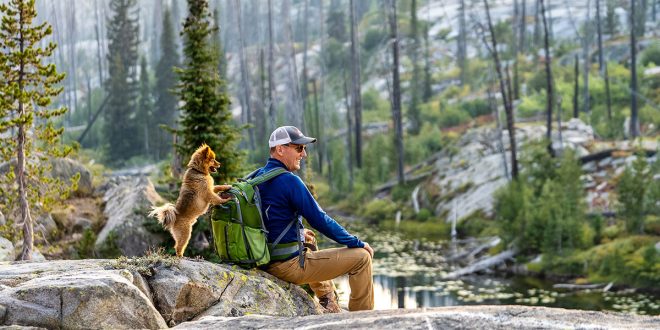When I first began venturing into the world of backpacking, one of the biggest challenges I faced was planning my meals. At first, I didn’t realize how crucial it was to properly plan food for a backpacking trip. I’d pack a few snacks here and there, but as I started taking longer and more strenuous hikes, I quickly learned that food could either make or break the experience. Over the years, I’ve perfected my approach, and now, meal planning is an integral part of my hiking routine. This guide shares how I tackle food planning for backpacking trips, from the basics to more advanced tips.
Why Food Matters for Your Backpacking Adventure
It’s easy to underestimate the role food plays when you’re getting ready for a backpacking trip. You may think that food is just a way to stave off hunger, but it’s actually a powerful tool for keeping your energy up, maintaining focus, and ensuring that your body can handle the physical demands of the trail. Whether you’re hiking for a weekend or spending a week in the wilderness, making sure your food plan is well thought out is essential for a successful trip.
After a few rough experiences early on where I didn't have enough variety or the right types of food, I realized how critical it is to balance convenience with nutrition. What you pack doesn’t just fuel your body; it also shapes the quality of your overall hiking experience. I’ve learned that food can turn a grueling hike into a rewarding one, or make a long day in the backcountry feel much longer than it has to be.
Start With Your Trip Details
The first step in learning how to plan food for a backpacking trip is to get a clear picture of the journey ahead. You’ll need to think about the trail’s duration, the intensity of the hike, and the terrain. Shorter hikes, such as a weekend trip, require much less food than a multi-day expedition in a remote area.
For instance, when I’m heading out for a weekend hike, I generally pack only the basics—lightweight, easy-to-prepare foods that won’t weigh me down. However, for longer treks, I need to think about more substantial meals that will provide me with sustained energy over a longer period. A more strenuous hike or one at higher altitudes may require me to increase my caloric intake as my body burns through energy faster. Understanding how much physical exertion is involved helps me determine how many meals I need to pack and what types of foods will keep me fueled for the duration.
Pack Nutrient-Dense, Lightweight Foods
When I first started hiking, I often found myself hungry halfway through the day, not because I didn’t bring enough food, but because I wasn’t choosing the right kinds of food. It didn’t take long for me to realize that the key to successful meal planning is packing foods that are not only lightweight but also nutrient-dense.
For breakfast, I’ve come to love quick oats. They're easy to prepare and pack a decent amount of carbs to fuel my morning hike. I make them more exciting by adding dried fruit, nuts, and even protein powder to make it a more balanced meal. For lunch, I focus on easy-to-eat snacks like energy bars, trail mix, and jerky. These are quick to grab, don’t require preparation, and provide a healthy mix of carbohydrates, fats, and protein.
Dinner is where I like to get creative, especially on longer trips. I rely heavily on freeze-dried meals for dinner because they’re lightweight, and all I need is a bit of hot water to prepare them. I look for meals that combine protein with plenty of vegetables and carbs to give me a well-rounded dinner that will help my body recover overnight. The best freeze-dried meals, in my experience, taste great and are just as filling as anything I’d eat at home.
Don’t Forget About Hydration
Hydration is just as important as food when it comes to backpacking, if not more so. I’ve made the mistake of focusing too much on meals and not enough on my water intake, and it definitely affected my performance on the trail. Learning how to plan food for a backpacking trip means understanding that water is essential for digestion, maintaining energy, and overall physical function.
I always make sure to carry a reliable water filtration system, such as a portable water filter or purification tablets, which allows me to refill my bottles or hydration reservoir from streams and lakes along the trail. That way, I don’t have to worry about running out of water, no matter how far I am from the nearest town. I also bring along electrolyte tablets, which are fantastic for replenishing lost minerals and keeping my energy up during longer or hotter hikes.
Prepare Your Meals Ahead of Time
Meal prepping is something I’ve come to rely on heavily. When I first learned how to plan food for a backpacking trip, I was always guessing when it came to how much of each food I should bring. This would often result in me packing either too much or too little, leaving me scrambling mid-trip. Over time, I learned that the key to success is organization.
I portion out my meals in advance by repacking everything into individual resealable bags. I label each bag with the meal type—breakfast, lunch, or dinner—and the day it’s for. This makes it incredibly easy to grab what I need, preventing me from having to dig around in my pack. I also use lightweight plastic bags, which keep everything dry and minimize bulk.
I like to include a variety of foods to keep my meals interesting, but I also make sure to stick to items that are durable and won’t spoil on the trail. Dried fruit, nuts, and vacuum-sealed cheese are all great options that require no refrigeration. I also bring along a small stove and a pot to prepare my meals, as hot food is often a welcome treat at the end of a long day of hiking.
Special Dietary Needs
If you have dietary restrictions, knowing how to plan food for a backpacking trip becomes even more crucial. When I first started hiking, I had friends who were vegan or gluten-free, and it took a little extra effort to find suitable meals for them. Nowadays, there’s a wide selection of freeze-dried meals and snacks that cater to various dietary needs, so I have no trouble packing meals that meet everyone's requirements.
I also make sure to bring along the necessary supplements, such as vitamins or protein powders, if they are part of my usual diet. One of the best tips I’ve learned is to always read the ingredients list when selecting backpacking food to ensure it aligns with specific dietary needs.
Keep Things Simple But Satisfying
Finally, the last tip I’ll share is that sometimes, less is more. When I first started learning how to plan food for a backpacking trip, I went overboard and packed too many items—snacks, supplements, meals, you name it. Over the years, I’ve realized that simplicity works best. I focus on a few essential meals that I know I’ll enjoy and rely on easy-to-prepare foods. This helps me avoid the burden of carrying excessive weight, leaving me with more energy for the trail.
Conclusion
Figuring out how to plan food for a backpacking trip is one of the most rewarding parts of preparing for a hike. By planning in advance, selecting lightweight, nutrient-rich meals, and staying hydrated, you’ll ensure that you have the energy to make the most of your time on the trail. Every meal you prepare becomes part of the adventure, whether you’re warming up a freeze-dried pasta dish or enjoying a quick snack on the go. With a little planning, you’ll be able to enjoy the journey, stay healthy, and refuel your body with the right foods at the right times. Happy hiking!
 Best Hiking Gear Hike More, Worry Less
Best Hiking Gear Hike More, Worry Less

